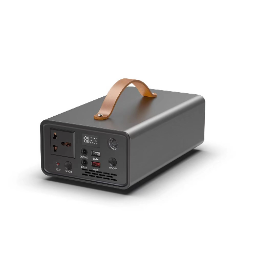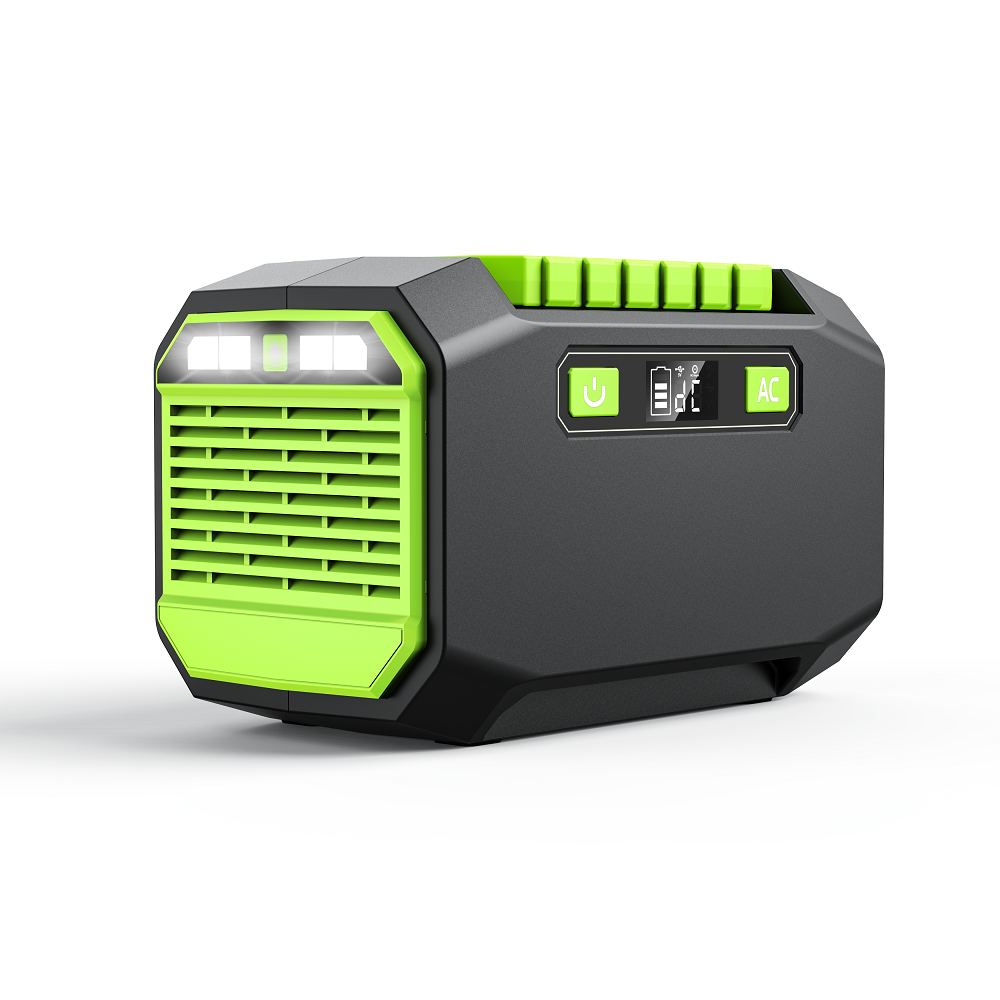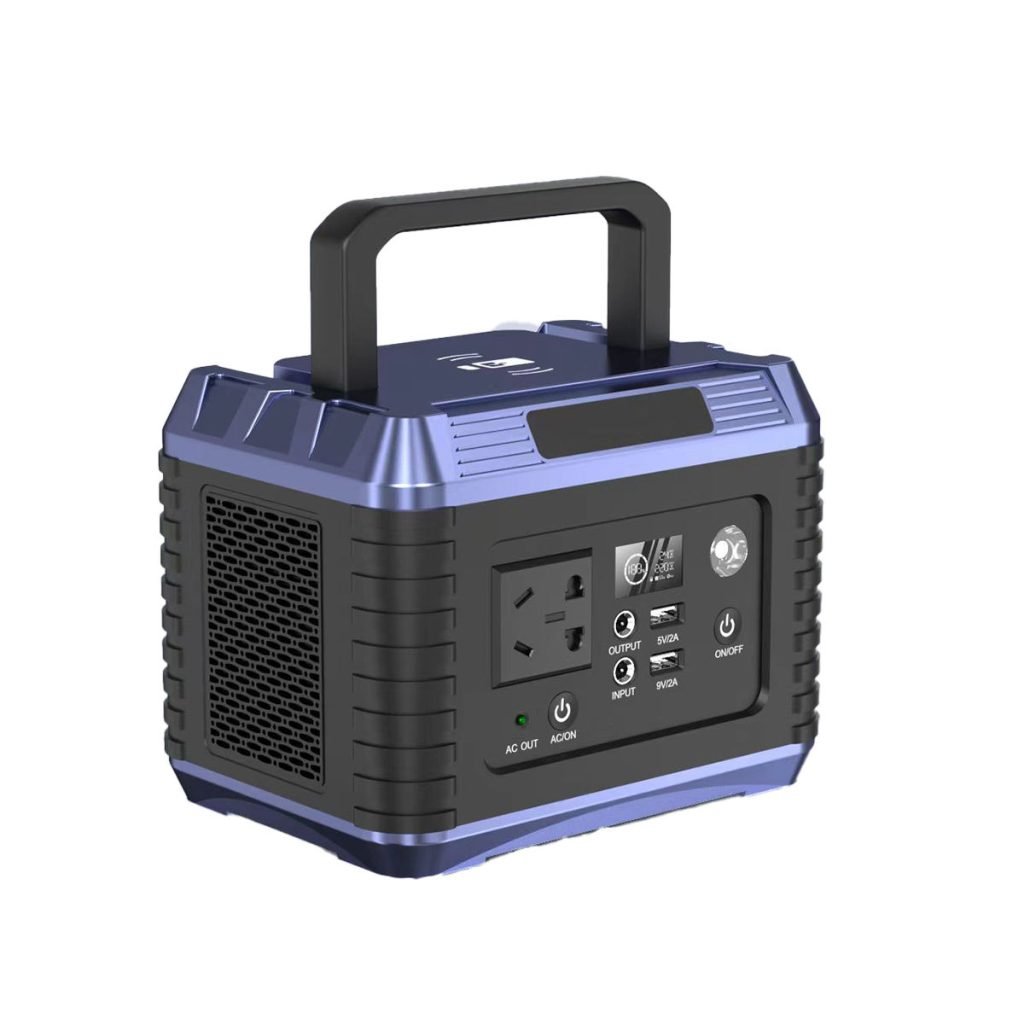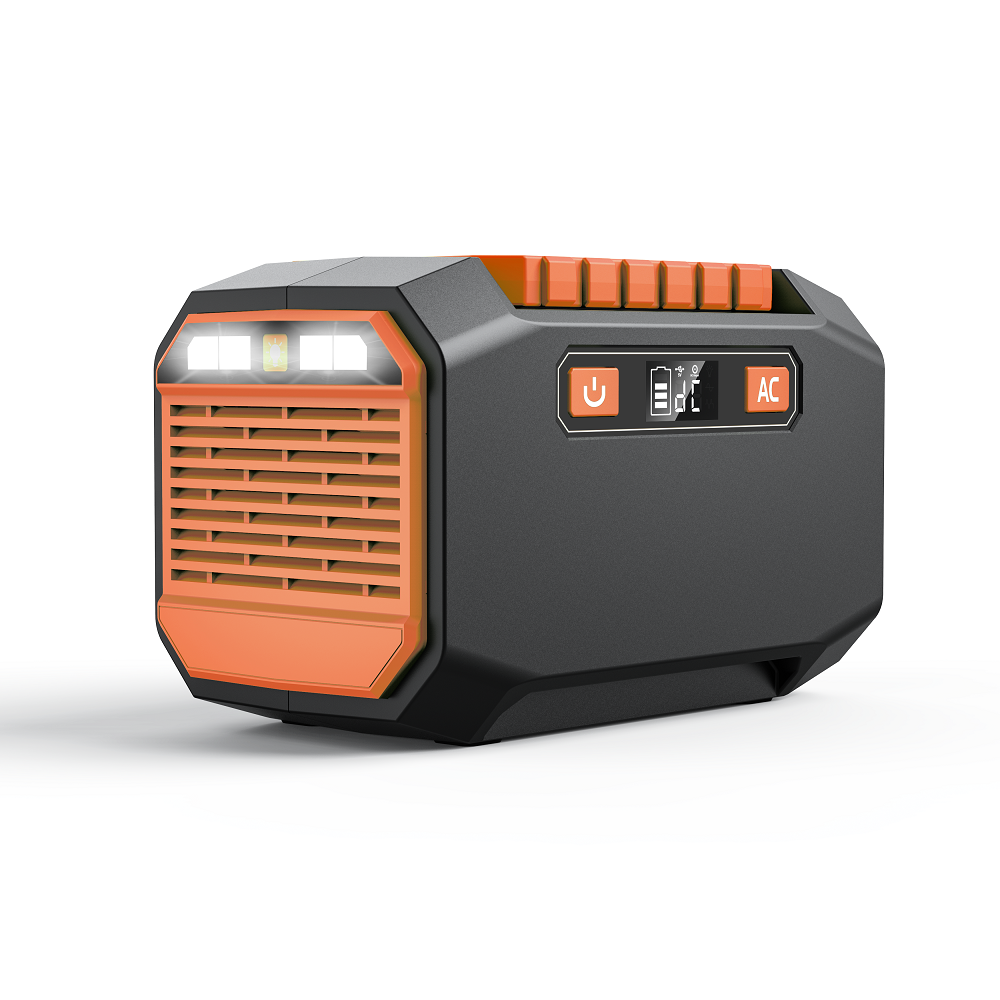What is a Portable Power Station?
A portable power station, a solar generator, is a compact, mobile solution for generating and storing electricity while on the move. It usually features a rechargeable battery, an inverter to convert the battery’s DC power into AC power for your devices, and multiple input/output ports for charging and powering various devices.
Portable power stations come in various sizes and capacities, from small, backpack-friendly models that charge smartphones and tablets to larger units capable of powering appliances like refrigerators or tools at job sites. They can be recharged through a wall outlet, car cigarette lighter, or solar panels, offering exceptional versatility.
As a popular alternative to traditional gas-powered generators, portable power stations are perfect for camping, outdoor activities, emergencies, and any scenario where reliable electricity is needed but access to conventional power is limited or unavailable. They provide a quieter, eco-friendly, and more portable solution.
| Aspect | Description |
|---|---|
| Definition | A portable power station is a compact, rechargeable battery system that stores and provides electrical energy for various devices and applications. |
| Primary Functions | |
| Power Supply | Provides electricity for small to medium-sized devices, such as smartphones, laptops, cameras, and appliances. |
| Off-grid Power | It supplies power in remote locations where traditional electrical outlets are unavailable, ideal for camping, outdoor activities, and emergencies. |
| Backup Power | Acts as a backup power source during outages or emergencies, ensuring essential devices remain operational. |
| Multiple Charging Ports | Features various output options, including AC outlets, USB, and DC ports, for simultaneously charging multiple devices. |
| Portability | Lightweight and designed for easy transport, allowing users to take power wherever needed. |
| Solar Charging Capability | Some models can be charged via solar panels, enhancing sustainability and providing an eco-friendly power solution. |
How Does a Portable Power Station Work?
A portable power station converts the energy stored in its internal battery into usable electrical power for running various devices and appliances. The battery can be recharged through several methods, including:
| Component | Description |
|---|---|
| Portable Power Station | Converts stored energy in its internal battery into usable electrical power for devices and appliances. |
| Recharging Methods | Different ways to recharge the internal battery: |
| Wall Charger | Plugging the power station into a standard electrical outlet. |
| Solar Panel | It harnesses solar energy to recharge the battery. |
| Car Charger | Charges the power station using a car charger while driving. |
| USB Port | Charges via USB from a computer or USB-enabled device. |
| Generator | Quickly and efficiently recharge the power station using a generator. |
| Usage | Once fully charged, it can be unplugged and used as a mobile power source. |
Once fully charged, the power station can be unplugged and used as a mobile power source.
Discharging: How Does a Portable Power Station Supply Power?
A portable power station supplies power through various output ports and components, such as:
| Component | Description |
|---|---|
| Output Ports | These include USB, AC, or DC connectors, allowing users to plug in and power their devices. |
| Inverter | Converts the DC (direct current) power stored in the battery into AC (alternating current) power, which most appliances use. It includes safety mechanisms to prevent over-discharging or overloading. |
| Battery Management System (BMS) | Monitors and controls the battery’s charging and discharging, regulating voltage and current to protect the battery and connected devices. |
| Display Screen | Shows the remaining battery capacity, output voltage, current, and other relevant information, helping users monitor power usage and optimize battery life. |
What Size Portable Power Station Do You Need?
Portable power stations are classified by size and measured in watts (W), which indicates the rate of energy transfer. A higher-wattage power station can provide more power on a single charge. When choosing a power station, consider both continuous power and peak power:
Continuous Power: The station can consistently provide this amount of power. Typical usage scenarios include:
Peak Power: This is the maximum power the station can provide in a short burst, such as when starting an appliance. Many appliances require a surge of energy to start, so peak power is an important consideration.
| Power Station Size (Watts) | Description |
|---|---|
| 100W – 200W | Suitable for small electronics like smartphones, tablets, and LED lights, often used for camping trips or short-term power outages. |
| 300W – 500W | It can power medium-sized devices like mini-fridges, small TVs, CPAP machines, and small power tools, ideal for longer camping trips or backup power during outages. |
| 600W – 1,000W | Suitable for larger devices like full-sized refrigerators, large TVs, and power tools; used for RV trips or as household backup power. |
| 1,000W or Higher | Designed for high-wattage devices like air conditioners, electric vehicles, and construction equipment; used for construction sites, disaster relief, or commercial backup power. |
Other Factors to Consider When Buying a Portable Power Station:
When selecting a portable power station, consider the following:
- Capacity: Measured in watt-hours (Wh) or amp-hours (Ah), capacity indicates how much energy the power station can store and supply over time. Stations with higher capacity can run larger devices for longer durations.
- Output: The number and type of ports determine how many devices can be charged simultaneously. Look for models with AC and DC outputs to accommodate a variety of devices.
- Voltage and Current Ratings determine what devices you can power and how quickly they can be charged.
- Battery Type and Recharge Time: Lithium-ion batteries are preferred for their high energy density and long lifespan. Consider the recharge time, as this affects how quickly the station can be back in operation after use.
- Resistance: The station’s resistance to environmental factors like temperature, moisture, and impact is essential, as is its ability to withstand power surges and fluctuations.
- Design: Consider the weight, size, and portability of the power station, as well as the durability and the type and number of output ports available.
Considering these factors, you can select the portable power station that best meets your needs, whether for outdoor activities, emergency backup, or everyday use.




